Given two strings s and t, return true if s is a subsequence of t, or false otherwise.
A subsequence of a string is a new string that is formed from the original string by deleting some (can be none) of the characters without disturbing the relative positions of the remaining characters. (i.e., "ace" is a subsequence of "abcde" while "aec" is not).
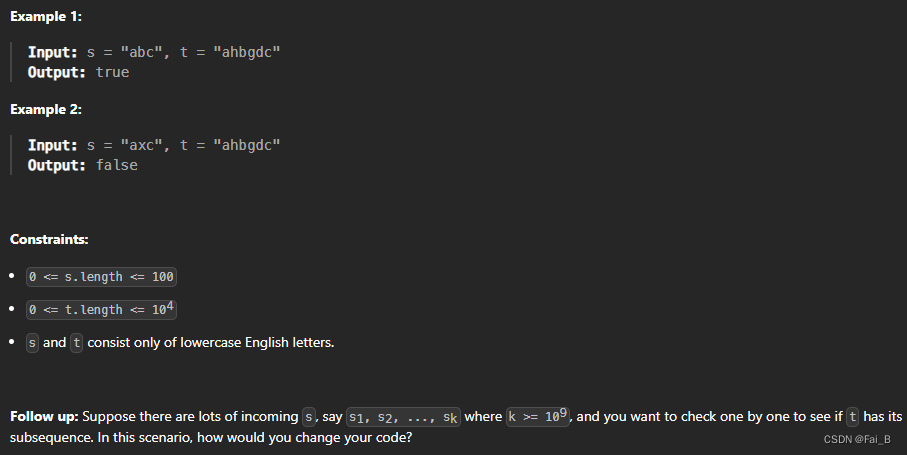
DP:
Time complexity: O(n × m)
Space complexity: O(n × m)
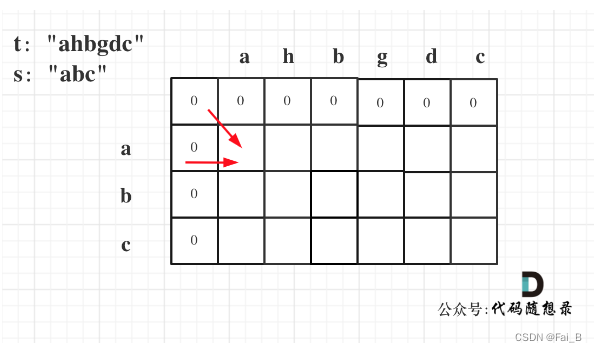
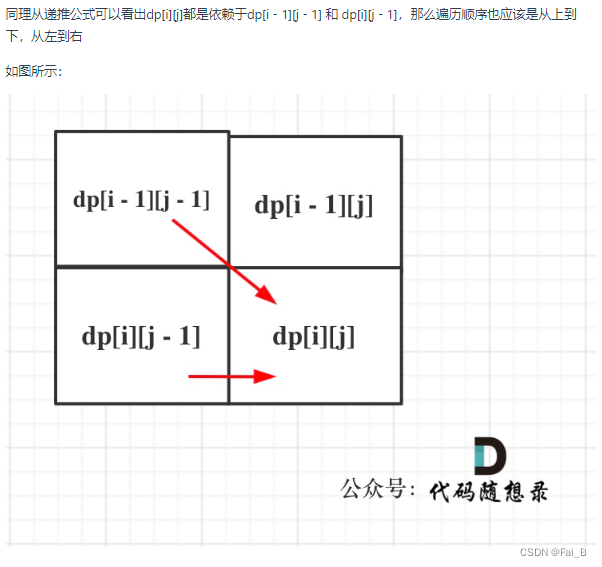
class Solution:
def isSubsequence(self, s: str, t: str) -> bool:
m = len(s)
n = len(t)
dp = [[0] * (n + 1) for _ in range(m + 1)]
for i in range(1, m + 1):
for j in range(1, n + 1):
if s[i - 1] == t[j - 1]:
dp[i][j] = dp[i - 1][j - 1] + 1
else:
dp[i][j] = dp[i][j - 1]
return dp[-1][-1] == mnomal:
class Solution:
def isSubsequence(self, s: str, t: str) -> bool:
i=0
j=0
while i<len(s) and j < len(t):
if s[i]==t[j]:
i+=1
j+=1
if i==len(s):
return True
return Falseoptimal:
class Solution:
def isSubsequence(self, s: str, t: str) -> bool:
if not s: return True
j=0
for i,ch in enumerate(t):
if(s[j]==ch):
j+=1
if(j==len(s)):return True
return FalseGiven two strings s and t, return the number of distinct subsequences of s which equals t.
The test cases are generated so that the answer fits on a 32-bit signed integer.
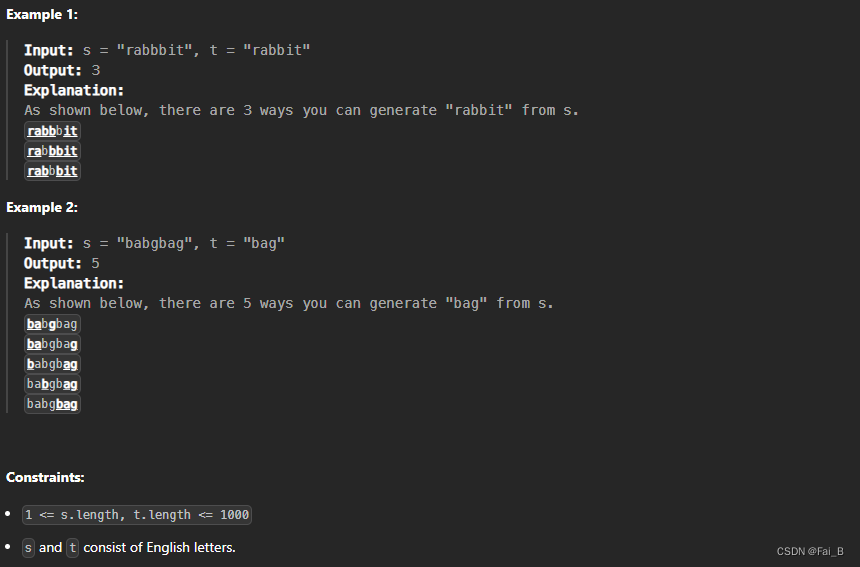
Analyze the two cases:
- s[i - 1] is equal to t[j - 1].
- s[i - 1] and t[j - 1] are not equal
When s[i - 1] is equal to t[j - 1], dp[i][j] can have two parts.
One part is to match with s[i - 1], then the number is dp[i - 1][j - 1]. That is, there is no need to consider the last letter of the current s-substring and t-substring, so only dp[i - 1][j - 1] is needed.
A part of it is matched without using s[i - 1], and the number is dp[i - 1][j].
When s[i - 1] == t[j - 1] , dp[i][j] = dp[i - 1][j - 1] + dp[i - 1][j];
When s[i - 1] != to t[j - 1], dp[i][j] is only partially composed and does not have to be matched by s[i - 1] (that is, it is simulated to remove this element in s), i.e.: dp[i - 1][j]
So the recursive formula is: dp[i][j] = dp[i - 1][j]
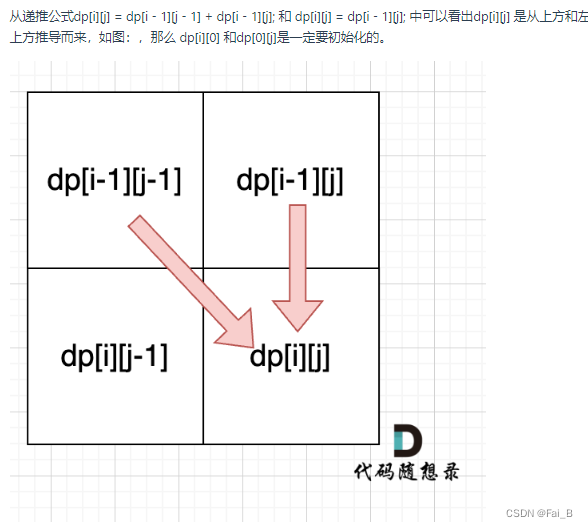

DP:
Time complexity: O(n × m)
Space complexity: O(n × m)
class Solution:
def numDistinct(self, s: str, t: str) -> int:
dp = [[0] * (len(t)+1) for _ in range(len(s)+1)]
for i in range(len(s)):
dp[i][0] = 1
for j in range(1, len(t)):
dp[0][j] = 0
for i in range(1, len(s)+1):
for j in range(1, len(t)+1):
if s[i-1] == t[j-1]:
dp[i][j] = dp[i-1][j-1] + dp[i-1][j]
else:
dp[i][j] = dp[i-1][j]
return dp[-1][-1]optimal:
Time complexity: O(n × m)
Space complexity: O(n)
def numDistinct(self, s: str, t: str) -> int:
n1, n2 = len(s), len(t)
if n1 < n2:
return 0
dp = [0 for _ in range(n2 + 1)]
dp[0] = 1
for i in range(1, n1 + 1):
# 必须深拷贝
# 不然prev[i]和dp[i]是同一个地址的引用
prev = dp.copy()
# 剪枝,保证s的长度大于等于t
# 因为对于任意i,i > n1, dp[i] = 0
# 没必要跟新状态。
end = i if i < n2 else n2
for j in range(1, end + 1):
if s[i - 1] == t[j - 1]:
dp[j] = prev[j - 1] + prev[j]
else:
dp[j] = prev[j]
return dp[-1]



















 378
378

 被折叠的 条评论
为什么被折叠?
被折叠的 条评论
为什么被折叠?








